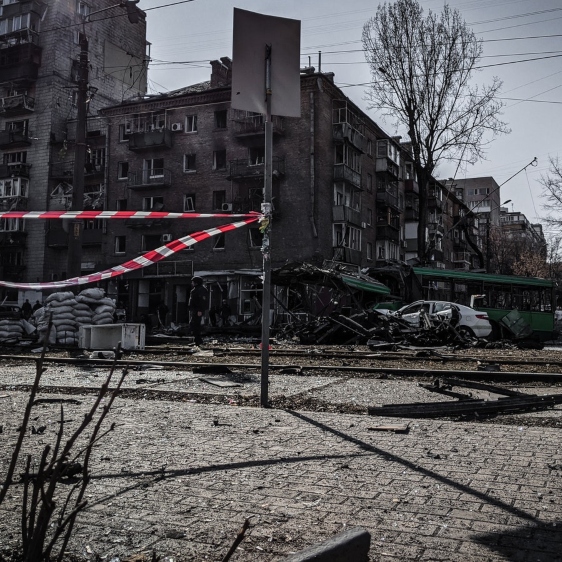


1 April, 2022
As images of mass destruction continue to emerge from Ukraine, this footage from a drone over Mariupol caught the attention of climate scientists around the world.
Concrete is one of the most environmentally damaging materials in the world. We produce around five tonnes of it per human per year, and the manufacture of it is highly emission intensive – making the concrete industry even more polluting than aviation.
The drone footage shows rows and rows of concrete rubble, destroyed by Russian advances. And amidst the unbearable human tragedy this creates, we also see an environmental one, in the destruction of the longest standing test site for cement alternatives.
This alternative was first created in the 1950s, at a time when ‘classic’ cement was expensive, and the USSR sought new material. Made from steel production waste in a process that does not emit any GHGs, this material was used to build many buildings in Mariupol all those years ago. With the destruction of the city, so ends the real-life experiment testing the durability of this kind of material when faced with the tests of time, urbanisation and nature.
People won’t build with something unless they’re sure it will stand the test of time, and what’s happened in Mariupol threatens to undermine our understanding of a material that could have been a game changer.
By Marie Guérinet